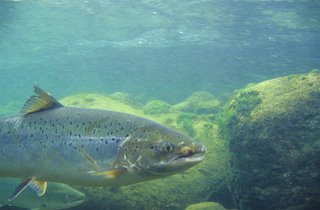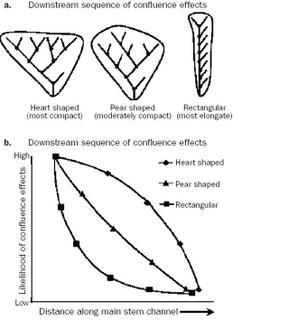River pioneer and environmentalist Luna Leopold has died at 90.
University of California, Berkeley, hydrologist Luna Bergere Leopold, a giant in the field of river studies who had a profound influence on nationwide efforts to restore and protect rivers and daylight urban creeks, died Thursday, Feb. 23, at the age of 90.
Leopold, a UC Berkeley professor emeritus of earth and planetary science and of landscape architecture, succumbed to heart and lung failure at his home in Berkeley.
The son of famed environmentalist Aldo Leopold, who often was called the father of wildlife ecology, Leopold was the first to turn a scientific eye on rivers and streams and draw conclusions about their form and evolution. Long before fractals became an everyday word, he realized the similarity between large- and small-scale characteristics of streams.
"He made crucial discoveries about the nature of rivers, especially their remarkable regularity," said William Dietrich, a UC Berkeley colleague of Leopold's and a professor of earth and planetary science. "He showed that this regularity of form applies to all rivers, whether they are in sand boxes or draining entire continents, at scales of a laboratory flume or the Gulf Stream."
Leopold was a "quantifier" who took notes on the natural world and wrote papers on everything from Hawaiian dew to energy expenditures in rivers, and even on the esthetic value of rivers, said Dietrich.
"He was a clear voice and advocate for ethics in science and a defender of the value of esthetics as a reason to protect the natural world, even going so far as to propose a quantification of esthetics," he said.
Leopold developed his expertise during a 22-year career with the U.S. Geological Survey (USGS), rising eventually to the level of chief hydrologist of the Water Resources Division.
"In effect, Luna turned the hydrologic division of the USGS into a premier research organization, contributing to the prominence the field now has," Dietrich said.
The Virtual Luna Leopold ProjectOn February 23, 2006, Luna Leopold died at the age of 90. Luna was a vital force, a man of extraordinary creativity and originality, whose passion about science and the natural world permeated all he did. He wrote with a clarity, simplicity, and insightfulness that inspired generations of researchers. Nearly all of Luna’s papers precede the time when publishing houses make pdf’s available. In order to avoid Luna’s seminal papers becoming “classics” (papers often cited but never read), we have created a web page where the majority of Luna’s papers have been scanned and made available on line as pdf’s. Luna assisted with this work, reviewing the publication list and helping us find originals of papers.
Visit the web page which contains a list of Luna’s publications and pdf copies of Juna's work.
Virtual Luna Leopold
Rivers+and+StreamsBETA.png)



















